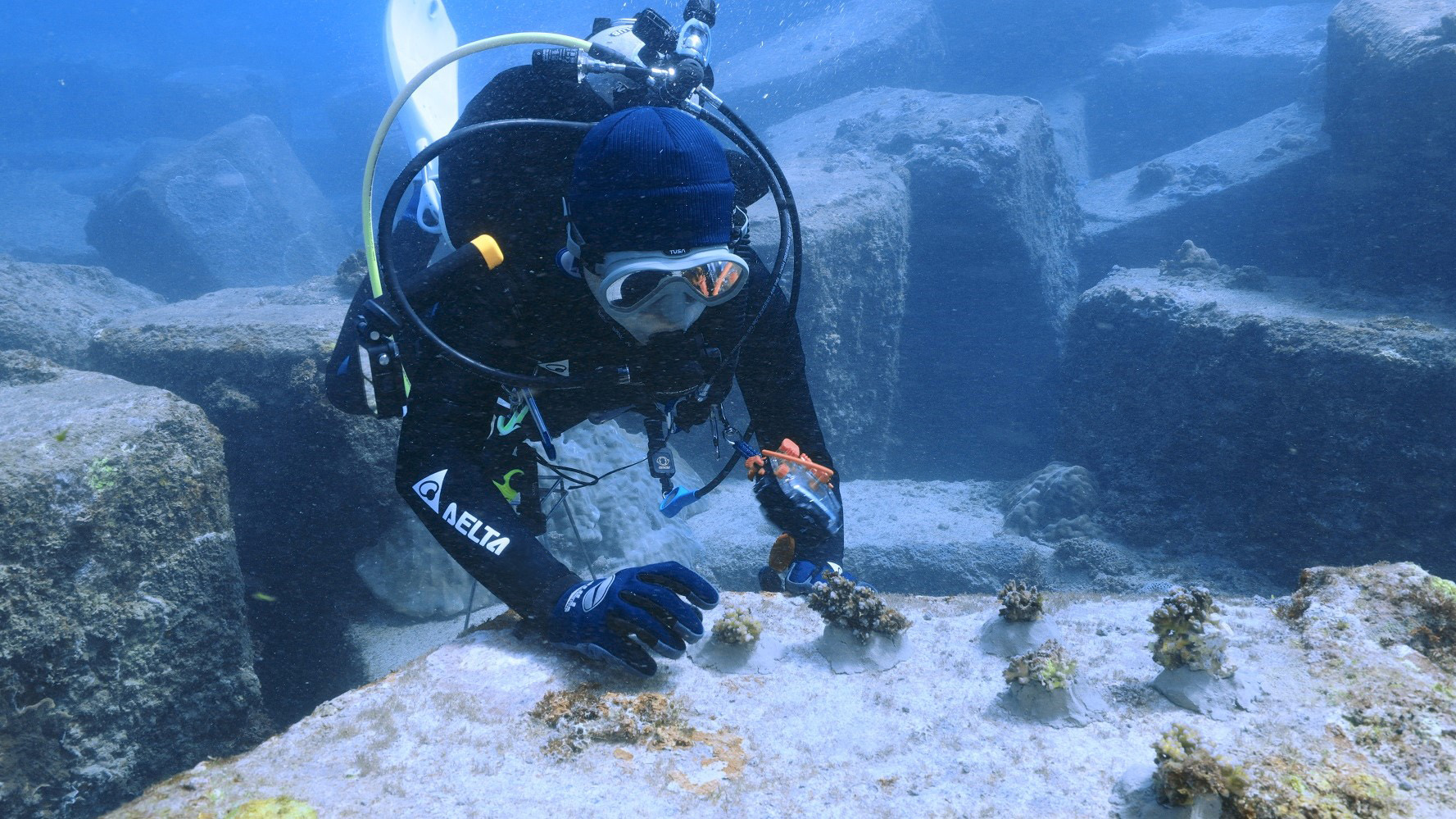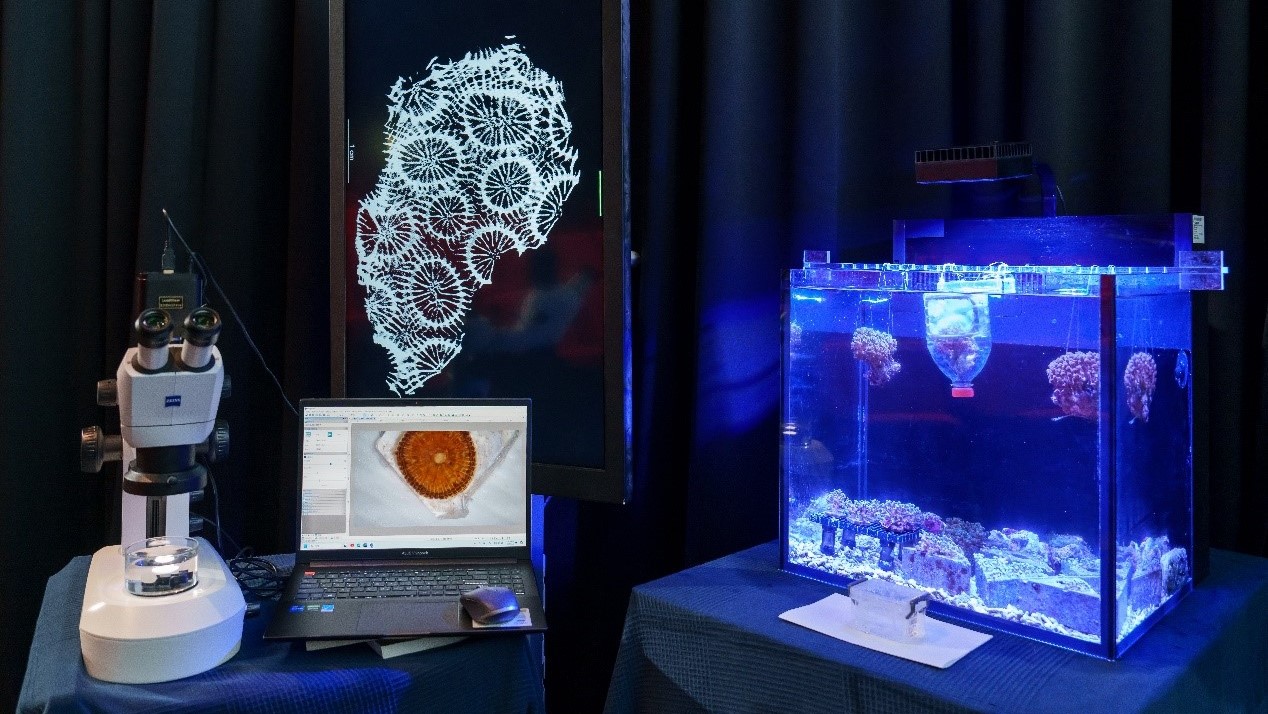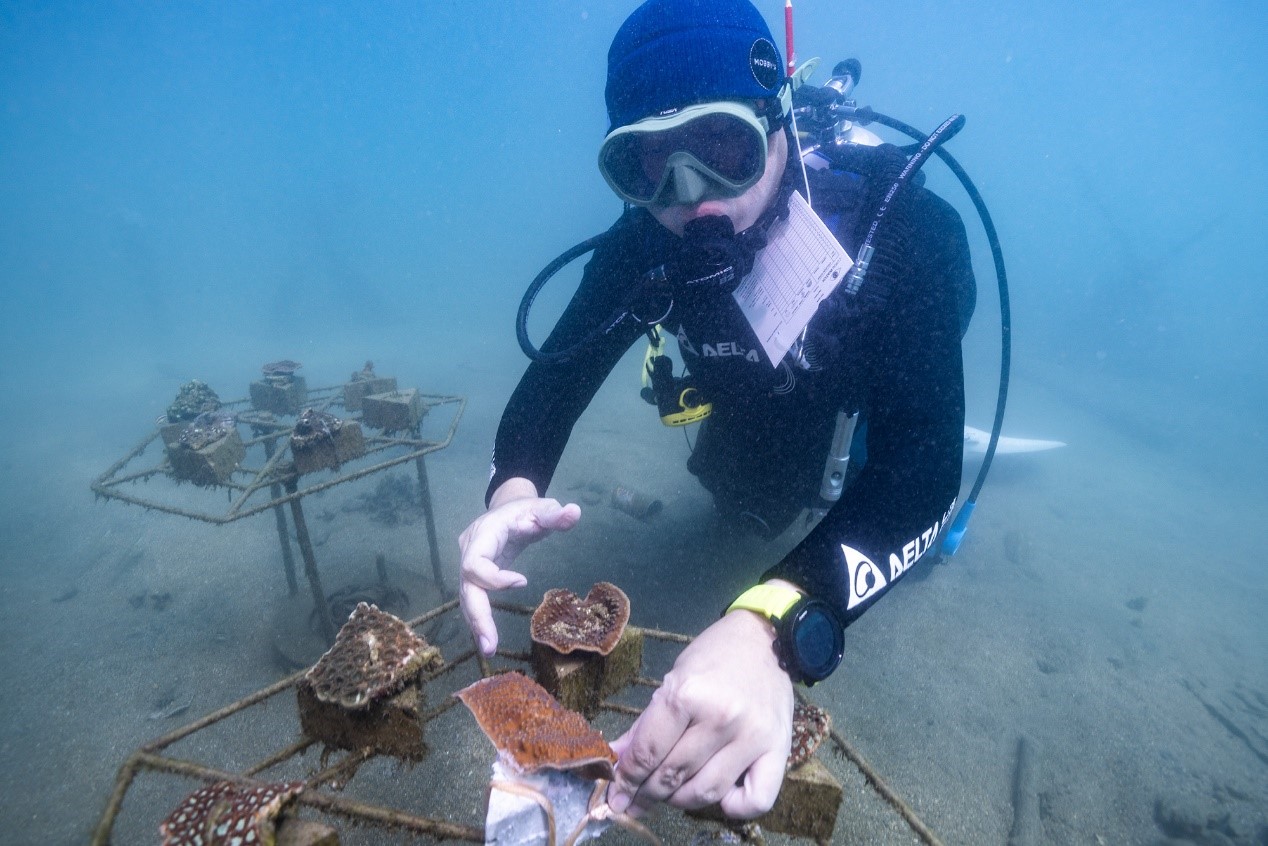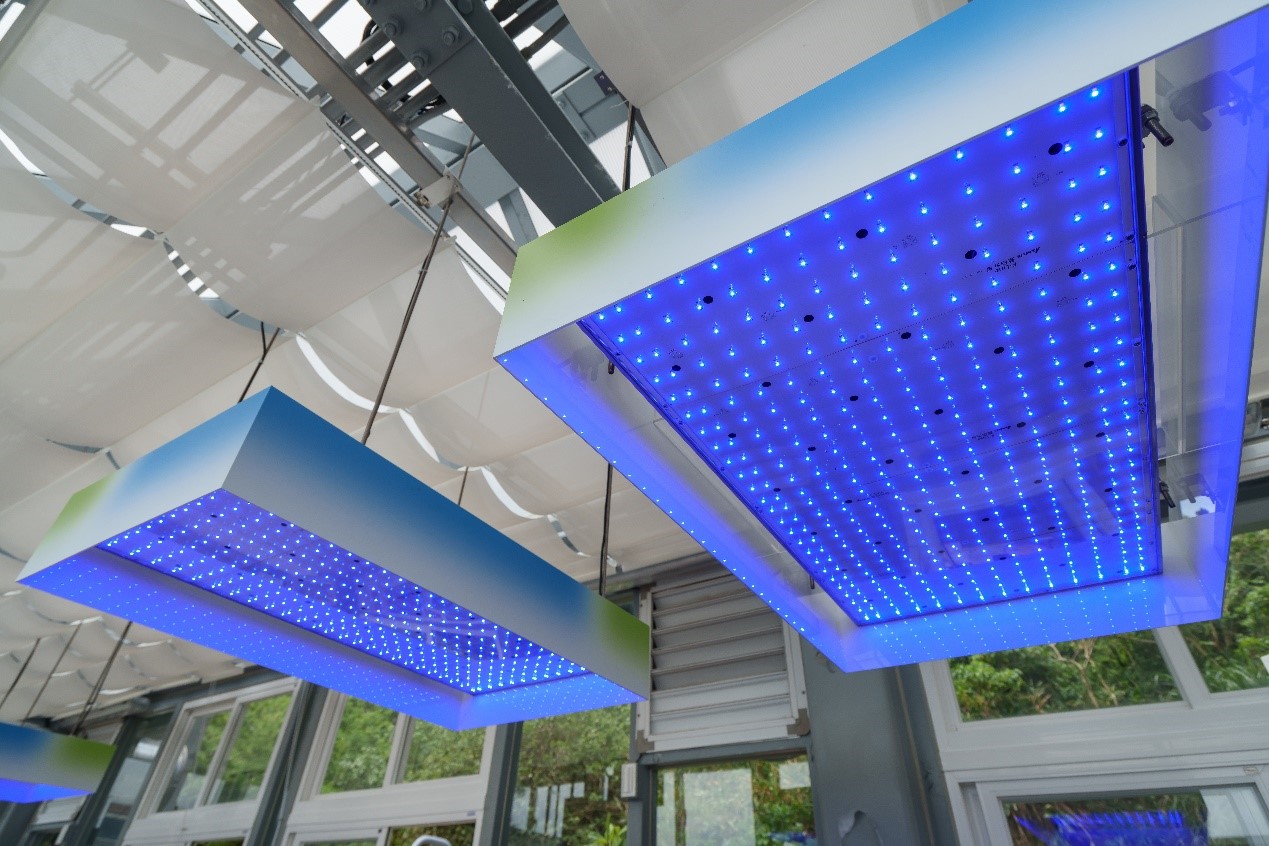
Updated:2024/05/15
Located on the northern edge of the golden triangle of high coral diversity, Nanwan (South Bay) boasts well-developed fringing reefs. The area experiences significant and sustained temperature fluctuations due to tidal-induced upwelling of cold deep seawater, while the thermal discharge from the nuclear power plant raises the water temperature by approximately 2°C. Despite past coral bleaching events, the coral coverage near the discharge outlet remains one of the highest. Some studies indicate that the coral reefs in this area exhibit higher coral coverage, heat resistance, and natural resilience.
To enhance the resilience of heat-tolerant corals, we have worked with the scientist. The research focuses on heat-tolerant coral species, Pocillopora acuta, near the water outlet of the nuclear power plant. It includes the establishment of in-situ coral nurseries on armor blocks with 3D monitoring and the use of a recirculating aquaculture system (RAS) to cultivate cross-generational corals for Pocillopora acuta.
For in-situ coral nurseries, the research team transplanted local coral fragments of Acropora and Pocillopora spp. onto the armor blocks along the northern sea dike of Wild Boar Ditch on Xiao Liuqiu Island. The results of 3D monitoring are promising, with notably high survival rates (91.5% and 74.2%) and impressive growth rates (197.2 cm²/year and 72.8 cm²/year) for the transplanted coral fragments. The research demonstrates the effectiveness of using armor blocks along the sea dike to build coral nurseries, enriching the artificial seashore ecosystem.
On the other hand, the land-based coral nursery employs RAS for the complete culture of Pocillopora acuta. The system utilizes either natural or artificial seawater, ensuring stable and uncontaminated water quality. It incorporates equipment such as protein skimmers to reduce nutrient concentrations and live rocks to maintain ecosystem balance through biological processes. Precise control of environmental factors, including light, temperature, water flow, water quality, and biological symbiosis, has enabled the sustainable release of coral offspring. These corals achieve sexual maturity within a short 16 months, allowing for the reproduction of the second generation (F2). This approach showcases the potential for replacing wild coral collection with artificial cultivation.

Delta and Mote Aquarium developed a partnership for coral research and rescue mechanisms.

Delta equips these volunteers with the necessary skills to use available tools such as CoralNet, iNaturalist, and CoralWatch to enhance restoration efforts.

The goal is to determine how to optimize the LED lighting to accelerate coral settlement and growth rates.